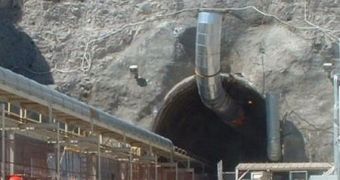Researchers at the Massachusetts Institute of Technology (MIT) say that the best possible alternative for the United States to store its large nuclear waste stockpile is to put it in cooling pools, as well as in casks made out of concrete and steel.
At this point in time, applying this method has several benefits that cannot be outweighed by other approaches to tucking these stockpiles under the rug. However, investigators admit that this is only a short- to medium-term solution.
The research suggests that this should be done as the US evaluates all other options for storing the nuclear wastes in the future. Until a more permanent solution is devised, authorities should stick to cooling pools and casks, the study indicates.
Although referred to as temporary storage, doing so could provide the nation with a few decades to decide what to do next. The other main option is activating permanent underground storage facilities such as the Yucca Mountain repository.
MIT experts decided to conduct this analysis after the crisis at the Fukushima Daiichi nuclear power plant began. The installation also used cooling pools to store its spent nuclear fuel, but the pools were affected by the combined effects of the March 11 earthquake and tsunami.
Regardless of what happened in Japan, the pools remain the safest bet for storing spent fuel rods. They can be successfully used for at least 100 years, until other solutions can be thought of and developed.
The new report shows that the current approach to handling the matter – which sees nuclear facilities improvising storage areas for their spent fuel – is disorganized, and prone to a disaster. The federal government was supposed to handle storage, but it never did.
As such, numerous installations ran out of storage space. They were only supposed to be able to handle 10-years worth of materials, but decades passed since anyone came to collect the fuel rods, Technology Review reports.
What the MIT team is proposing is that the government set up a systematic program of handling this issue. This implies collecting the fuel rods, placing them into new cooling pools, and then moving them into large, dry casks.
Doing so will also allow for an easier reprocessing of the spent material, once technologies to do so become cheaper. This was the main plan in the first place for all US nuclear facilities, but the idea was abandoned due to high costs.
Having all spent fuel centralized at a single storage facility would enable a faster reprocessing, when costs are brought down to affordable levels. The research group estimates that studies of the technologies needed to do so would require about $1 billion in federal funding.

 14 DAY TRIAL //
14 DAY TRIAL //